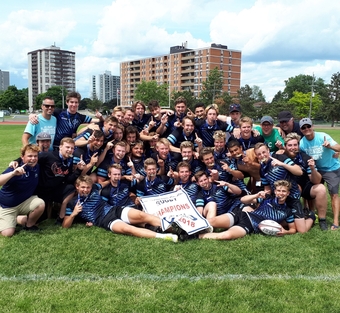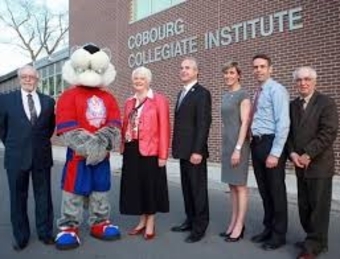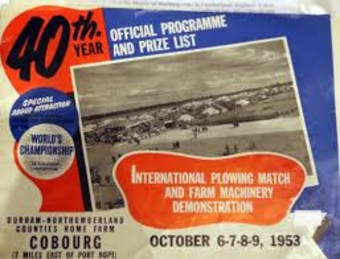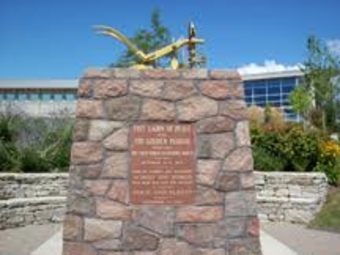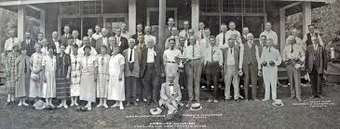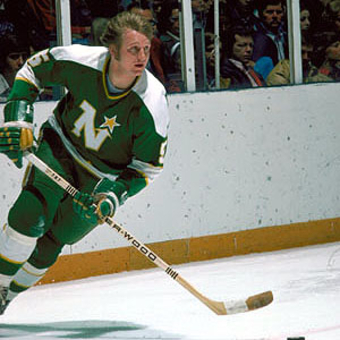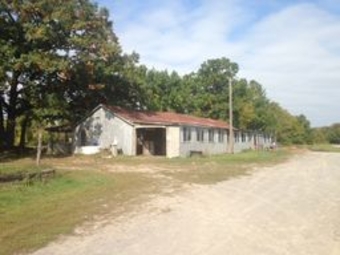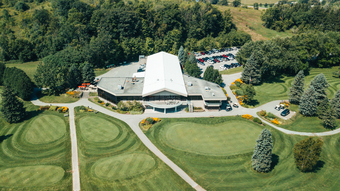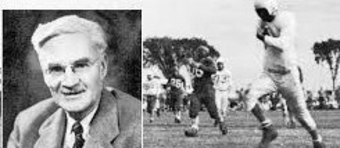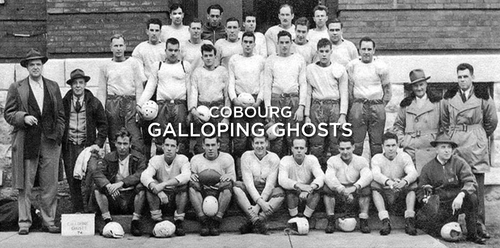Gerald Alphonsus “Jerry” Lawless
Physical Education Teacher and Coach
CDCI West Viking Coaching Legend
Gerald Alphonsus “Jerry” Lawless was born on October 18, 1931 in Grafton, Ontario. He was one of nine children of Thomas Alphonsus “Phons” Lawless and Mary ”Eva” (Kernaghan). Jerry passed away in his 83rd year on November 5, 2013.
Jerry grew up doing chores on the family farm and volunteering at church. As a young adult he worked on the railway, picked tobacco, and pruned Christmas trees to pay for his university courses. As an adult he continued to go home and help cut grass and trim hedges on the family farm. He attended St. Mary’s Elementary School in Grafton and then went to high school at Cobourg Collegiate Institute (CCI).
Jerry went to St. Michael’s College at the University of Toronto where he graduated in 1955 with a Bachelor of Arts degree. He completed the Ontario College of Education course in the summer and began his high school teaching career in Englehart, Ontario, in September of 1955. Jerry married Audrey (O’Shea) from Hastings, Ontario, on December 26, 1955.
In 1956, Jerry and Audrey moved to Cobourg, Ontario, where Jerry accepted a job teaching English and Mathematics at CDCI West. Jerry continued his University education taking night courses and summer courses. In 1962, he graduated from McMaster University in Hamilton with a Bachelor of Physical and Health Education. In 1963, Jerry was appointed head of the Physical Education Department at CDCI West. Jerry taught and coached for 33 years, before retiring in 1988.
In his early years of teaching, Jerry coached 5 to 9 teams because there weren’t enough coaches. During his years at CDCI West Jerry focused on not only the development of his student athletes' athletic skills, but also their life skills. He attended coaching clinics over the years to improve his knowledge as a coach. Jerry coached numerous teams to championship wins. Some of these included:
1967 - Kawartha and COSSA Boys Volleyball
1968 - Kawartha and COSSA Boys Volleyball
1975 - Kawartha and COSSA Midget Boys Basketball
1978 - Kawartha and COSSA Midget Boys Basketball
1979 - Kawartha and COSSA Midget Boys Basketball
There was also a soccer championship in that mix. Many of his track and field athletes won championships over the years. On one occasion, Jerry coached soccer and volleyball teams to championship wins on the same day.
Jerry was recognized with many awards. He was presented with the Pete Beach Award, an Ontario Federation of School Athletic Association (OFSAA) Coaching Excellence Award, presented to outstanding coaches for their contributions to better their sport and athletes in Ontario. This award was designed to recognize the contribution of a coach over a period of several years.
In 1988, he was presented with the Coach’s Dedication Award which recognized his coaching contributions from 1956-1988 for his continuous effort and support of athletics at “the West”. Jerry had two Athletic Banquet Awards named after him - The Jerry Lawless Coaching Award and the Jerry Lawless Senior Male Athlete of the Year Award. Jerry Lawless was the ultimate West Viking.
The CDCI West Gymnasium was named “The Jerry Lawless Gymnasium” in his honour. When CDCI West closed, Jerry was chosen to share the Cobourg Collegiate Institute gymnasium name with Del Dillon - “The Dillon Lawless Gymnasium”.
Outside of school life, Jerry was an active volunteer within his community. He was a volunteer coach for girls softball and he helped Rick McManus coach the Rouw Construction Girls “Y” Peewee Ball team to a league championship in 1970. This was the first Donegan Park team in the league’s eight year history to capture a championship.
Jerry volunteered with the track and field events at the Cobourg Highland Games in Donegan Park and at St. Michael’s Church in various roles as a reader, an usher, and as an Instructor for Marriage Preparation courses. He and Audrey helped with the Meals on Wheels program. They were cherished volunteers with Cobourg and District Community Living, where they delivered meals and drove the sick and elderly.
Jerry’s personal hobbies and sports activities included hockey, golf, curling, skiing, tobogganing, gymnastics, lawn bowling, square dancing, bridge and gardening. As a young man he had to hitchhike to play hockey and played many games with frozen toes. He was a competitive athlete but concentrated more on coaching students, his daughters and his grandchildren.
Jerry was a dedicated family man. He taught his three daughters many school sports and other skills including swimming, fishing, skating, softball, trampoline, tobogganing, hiking, skiing and camping. Jerry spent countless nights flooding a large ice rink in the backyard for his daughters. He was rewarded for this hard work by watching his daughter Ginny play hockey for Queen’s University. Her team won a gold and two silver medals.
Jerry was a humble man who did not seek the limelight. His brother and sister helped to pay for his university. He was one of two children out of his family of nine that went to University. He learned at a young age to pay it forward and to do random acts of kindness, with nothing asked in return.
Jerry always shared whatever he had with others. He quietly helped students out by purchasing meals, athletic shoes, sports gear, tickets to sporting events, or by driving them home after a late game. Jerry’s former students continued to visit him when they were home for Christmas or summer breaks. Students mailed him pictures of their children playing sports. Some of his former students have shared that they continue to follow many of his life lessons.
Jerry had many quotes that he will be remembered for:
The KISS rule - “Keep It Simple Simon” - no one is stupid around here.
“You aren’t the first to do it and you won’t be the last” - if someone made a mistake.
“If you’re not nervous, you’re not ready”.
“White socks or no socks”.
Once Jerry retired, he filled his hours with sports, woodworking, gardening, bridge club and travelling with his wife Audrey. Jerry built a table and picture frames using wood from the floor of the small gymnasium at CDCI West. Jerry and Audrey spent many hours caring for their four grandchildren and supporting them in their activities. In retirement, Jerry continued to teach and coach his grandchildren for 27 years.
Jerry passed on his knowledge through his values by teaching leadership, life skills, perseverance, integrity, patience, honesty, kindness, and respect for others. The “torch” has been passed on to his daughters, grandchildren, great grandchildren and many students who continue to “pay forward” his legacy.
Some comments from the Gym naming and from Cobourg Yesteryears Facebook posts include:
“He always went out of his way for those who struggled or did not fit in”.
“He was a man who defined West Athletics”.
“As I step onto the track, and settle into the starting blocks, Mr. Lawless is still with me”.
“Jerry Lawless had his own quiet way of motivating athletes to at first try, and often succeed.”
“If I can influence just one person the way Mr. Lawless influenced hundreds I would be proud”.
“Jerry Lawless touched so many people in his time at the West Collegiate, trust me, they all remember him for his time and dedication he gave everybody”.
“Mr. Lawless personified “spirit” at The West. Whether you were one of his students, a member of one of the countless teams he coached, or just another face in a school of hundreds of kids, he made an effort to get to know everyone. Pretty sure he loved his job, and we all benefited”.
“He gave of himself not just at school but at church and everyday life. I never knew him to ever put anyone down but he always tried to show them their self-worth.”
“Mr. Lawless instilled in us to always give 110%. I will never forget him. I always to this day try to give 110% in whatever I do”.
Jerry said, “You are rewarded so many times over by teaching children”.
Gerald Alphonsus "Jerry" Lawless
Forever will his praise be sung by his students both old and young!
Rah Rah Rah!
(Quote taken from the West school song – slightly modified).
A Special Teacher
by Layton Dodge
June 14. 1967 Cobourg Sentinel-Star
THE END OF ANOTHER SCHOOL TERM IS a rather appropriate time, I think, to pen a few kind words about a unique teacher who ranks in my book as the undisputed leader in the physical fitness field in Cobourg.
High school students of the last ten years readily will agree that the man who deserves that billing is Jerry Lawless, head of the PE department at the West Collegiate.
There is no teacher I know who is more admired and respected in our town than the same Mr. Lawless. Boys and girls alike have only good things to say about this man. In fact, in all my dealings with secondary school people, I've never heard any student utter a harsh word about him. That's a remarkable endorsement for a teacher whose job it is to instruct and discipline sometimes temperamental, often critical teenagers.
Jerry Lawless is one of a kind, in my estimation, because of the unparalleled rapport he has established with the students while still maintaining control. There are no know-it-all airs about him. He talks their language, so to speak. He sometimes needles. He often prods. He treats students as young adults rather than as puppets.
Like an older brother; he punishes when it is deserved and praises when it is their just due. In return, the boys, most of whom an looking for direction and respond to it when it is properly channeled, do for him what they wouldn't normally do for somebody else.
Ask almost any CDCI West boy which teacher he finds the friendliest, which one he can tell his troubles to and which one he knows best and chances are the overwhelming majority will single out Mr. Lawless. The collegiate gym is the hallowed grounds of basketball, wrestling, volleyball and gymnastic school teams, inter-form teams and inter-class teams. It is the arena of emotions, the informal classroom of the school.
The campus is a training ground for track, soccer, lacrosse and football. In these domains, you generally find Jerry Lawless - spurring a boy to a more concerted effort, passing along a pointer, demonstrating proper technique, organizing a game, running a practice or assisting another teacher in instructing. He freely gives up countless off, duty hours to pursue these tasks.
Teenage boys listen and pay heed to Jerry Lawless because he knows what he's talking about. He is familiar with the basics of every high school sport and extremely knowledgeable in the finer points of many. What's more, he's not a "do-what-l-say-and-not-as-I do" instructor. Usually, he can demonstrate the correct procedure himself. Moreover, Jerry is ever conscious of the athletic capabilities of his students, their whims and their idiosyncrasies.
I know him to be an excellent analyst, too, able to pick out the flaws in a performance quickly and accurately. Significantly, he judges excellence by performance, spirit and the will to achieve, not by victory alone. Enthusiasm and desire distinguish the great teacher from the ordinary one. Jerry Lawless is abundantly endowed.
He obviously wants to work with boys and doesn't mind spending extra time to do it. For instance, he's one of three coaches taking 47 athletes from the COSSA area on a 5-day expedition to New Brunswick for a schoolboy track meet in St. John on July 1.
Despite the lack of certain facilities (such as a track and a football field), with which other area high schools are blessed, and the obvious disadvantage of a comparatively small male student population, CDCI West boys have more than held their own in athletic circles in recent years, outdoing their more numerous, more favored East Collegiate counterparts in this regard.
From this observation post, Jerry Lawless deserves a good deal of the credit for this phenomenon. Many years from now, however, CDCI West graduates will not remember Jerry Lawless for the number of winners he produced, directed, assisted or just encouraged. They'll remember him for the kind of person that he was.
And that, I suggest to you, dear reader, is undoubtedly the finest compliment they could ever hope to pay him.
Updated August 2020
